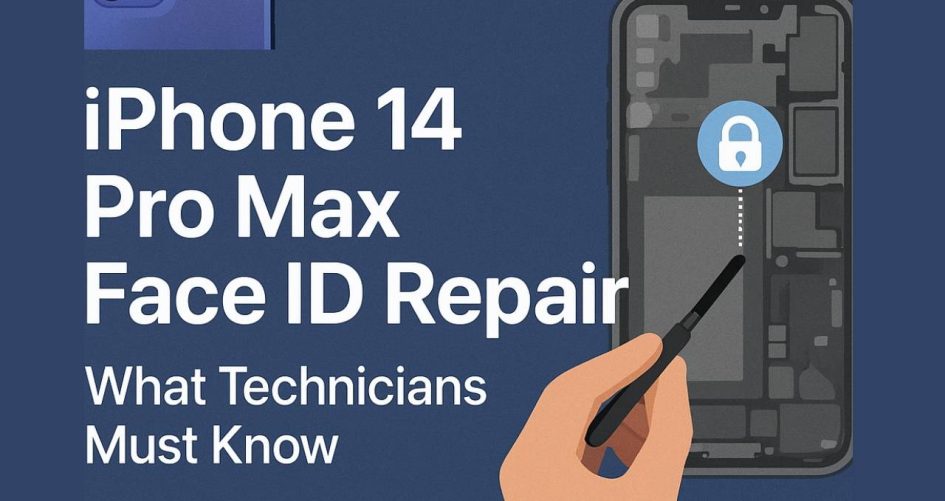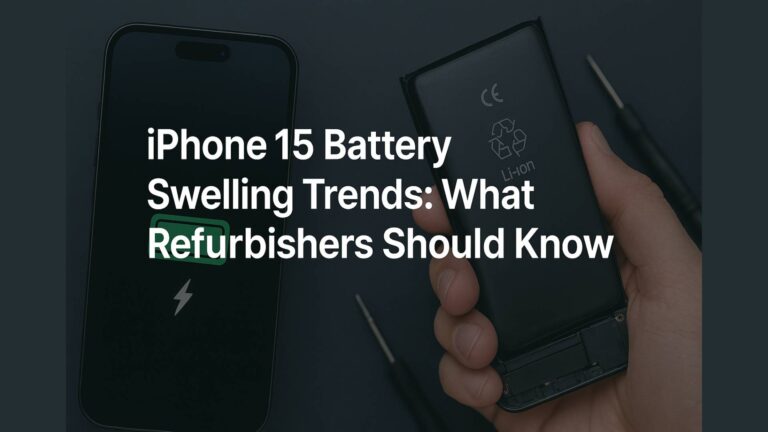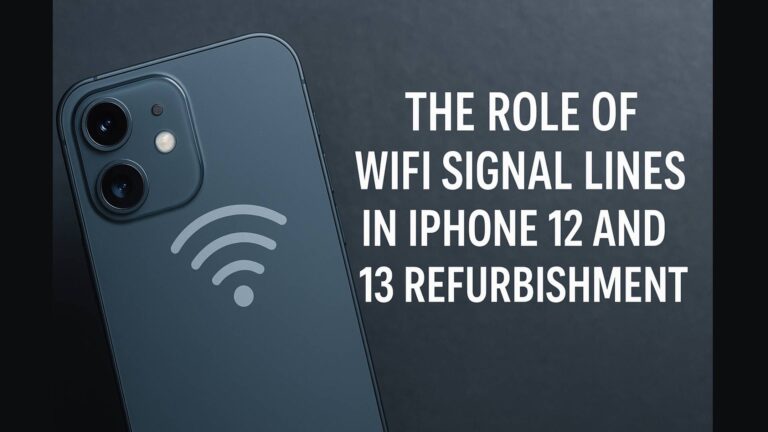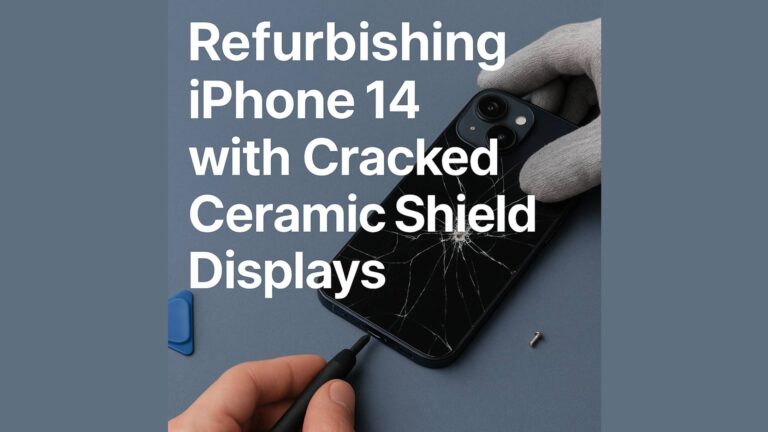As facial recognition becomes the standard in smartphone security, the iPhone 14 Pro Face ID system is under intense scrutiny—especially when it stops working. With a growing number of users seeking help for malfunctioning Face ID, technicians are now seeing a surge in Face ID troubleshooting cases, most of which stem from damage to the infrared module, one of the most sensitive and crucial components inside Apple’s TrueDepth camera system.
In this article, we’ll guide repair pros and refurb specialists through the must-know techniques, tools, and best practices for handling Face ID issues on the iPhone 14 Pro Max. Know more.
The Rise of Face ID Troubles in iPhone 14 Pro Series
Face ID debuted with the iPhone X, but it has grown far more complex in the 14 Pro Max. Now more integrated into both software and hardware, any damage to one component can render the entire system non-functional. The result? Technicians now regularly deal with cases where the Face ID feature simply stops working after screen or housing repairs—especially when the infrared module is mishandled.
iPhone 14 Pro Face ID System: Components & Technology
To perform accurate Face ID troubleshooting, you must understand the hardware involved. Apple’s TrueDepth camera system contains:
- Flood Illuminator – Projects infrared light to aid in facial mapping
- Dot Projector – Creates a 3D map of the user’s face using 30,000 dots
- Infrared Camera – Captures the reflected pattern
- Proximity Sensor & Ambient Light Sensor – Adjust recognition based on environmental conditions
- Infrared Module – Combines several of the above in a compact chip set
The iPhone 14 Pro Face ID setup is sophisticated, but also fragile. Each part is paired to the logic board and cannot be replaced without high-level EEPROM transfer.
Why the Infrared Module Is the Most Critical Face ID Element
The infrared module is often called the “heart” of Face ID. It handles both data capture and transmission. Any misalignment, heat damage, or flex tear can instantly shut down the entire system.
It’s especially prone to failure during screen replacements, as technicians often forget how tightly integrated the module is to the front housing.
Face ID Troubleshooting: Early Signs of Malfunction
When a customer brings in an iPhone 14 Pro Max with Face ID issues, watch for:
- Error message: “Face ID is not available, try again later.”
- Face unlock delays or failure under certain lighting conditions
- Inability to register a new face
- Inconsistent performance after screen or battery repair
These are all signs of a possible infrared module or logic board-related issue.
Common Reasons for iPhone 14 Pro Face ID Failure
Technicians frequently encounter:
- Drop damage affecting internal flex connections
- Screen replacement without proper TrueDepth module handling
- Moisture damage, especially near the ear speaker
- Uncalibrated Face ID module swaps
- EEPROM mismatches from donor parts
Recognizing these causes helps you streamline Face ID troubleshooting effectively.
Face ID Repair vs Replacement: What Are Your Options?
Apple-authorized centers will simply offer a full replacement, but third-party repair shops have three main options:
- EEPROM chip transfer – Moving encrypted data from old module to new one
- Face ID rebuild – Involves housing recovery and laser separation
- Infrared module swap – Requires high-precision soldering and calibration tools
Only highly trained technicians should attempt these processes.
Tools You’ll Need for Face ID Repair
To repair an iPhone 14 Pro Face ID system safely, make sure you have:
- Stereoscopic microscope for micro work
- Laser machine (for separating Face ID components)
- EEPROM read/write tools
- Microsoldering iron with fine tip
- High-quality thermal adhesive
Investing in professional gear helps prevent irreversible damage.
Step-by-Step iPhone 14 Pro Max Face ID Repair Process
Step 1: Disconnect battery, display, and flex cables
Step 2: Carefully remove the speaker module housing the Face ID array
Step 3: Use laser or heat to isolate the infrared module
Step 4: Use EEPROM tool to extract and reprogram necessary data
Step 5: Reinstall modules and test thoroughly using native diagnostics
Always verify functionality under multiple lighting conditions.
Best Practices for Safe Face ID Repairs
- Avoid static electricity by grounding your tools
- Use low-heat separation methods near Face ID sensors
- Always document module serials before and after repair
- Don’t swap Face ID parts between units without EEPROM migration
Following these tips ensures high success rates and customer trust.
Face ID Repair After Water Damage
When moisture affects the infrared module, here’s what to do:
- Look for corrosion around the front housing
- Remove module and clean with isopropyl alcohol
- Use ultrasonic cleaner if corrosion is heavy
- Replace module if damage is irreversible
- Always reapply hydrophobic coating to protect reinstalled parts
Water-damaged Face ID units are repairable—but not always economically.
Software Fixes vs Hardware Intervention
Before jumping into soldering:
- Try resetting Face ID in iOS settings
- Use DFU mode to reinstall firmware
- Run diagnostics via iOS 17 logs
If Face ID doesn’t pass these basic checks, it’s time to inspect the infrared module.
How the Infrared Module Affects Face ID Accuracy
Misaligned or malfunctioning infrared components can result in:
- Slower unlock times
- Inability to recognize at angles
- Errors in low-light or bright sunlight
- Recognition failure due to depth mapping distortion
Correcting lens angle and using OEM parts is key to fixing these issues.
Face ID Repair and Warranty Concerns
Repairs involving Face ID almost always void AppleCare coverage. Wholesalers and technicians should:
- Notify customers of warranty impact
- Offer a limited service guarantee
- Provide post-repair testing and documentation
Transparency builds customer trust and credibility.
Technician Tips for Reliable Face ID Troubleshooting
- Only use OEM or high-grade refurbished parts
- Keep workspaces dust-free and ESD-safe
- Use tools like JC V1S or QianLi Face ID Reborn Pro for data transfer
- Test under direct sunlight and darkness to ensure consistency
Small habits lead to big success in sensitive repairs like these.
Wholesale Trends in iPhone 14 Pro Face ID Modules
With demand rising, wholesalers are now:
- Stocking refurbished infrared modules from disassembled units
- Sourcing housing assemblies with Face ID intact
- Offering bundled repair kits for technicians
Average wholesale cost for a working Face ID module ranges from $60–$120 depending on condition and region.
FAQs: iPhone 14 Pro Max Face ID Repair Guide
Q1. Can I repair Face ID without EEPROM tools?
No. EEPROM tools are required for module pairing.
Q2. Will a Face ID swap from another iPhone work?
Not without transferring data from the original unit.
Q3. What’s the most common cause of Face ID failure?
Flex cable damage or improper screen replacement.
Q4. Can I test Face ID functionality before full assembly?
Yes, with tools like JC V1S you can simulate the repair.
Q5. Are aftermarket infrared modules safe?
Some are, but OEM is always preferred for accuracy and longevity.
Q6. Is Face ID repair profitable for repair shops?
Yes, if done correctly. High margins exist due to complexity and demand.
Conclusion: Mastering iPhone 14 Pro Face ID Repair
Mastering the art of iPhone 14 Pro Face ID repair is no longer optional—it’s a must for every serious technician and refurbished mobile specialist. With demand climbing and parts becoming available in the wholesale market, those who learn how to handle the infrared module properly and perform accurate Face ID troubleshooting will lead the future of repair services. Know more.





